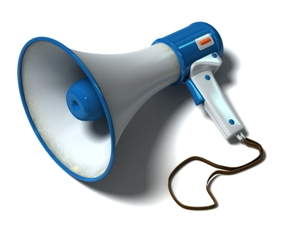Creating and Replying to Messages
SUMMARY
It is important to structure your email for maximum impact and usefulness, this can be achieved by doing the following:
• Using an appropriate and meaningful subject line
• Addressing the email to only those who need to receive it:
o Only include recipients in the “To” field who are expected to act or take decisions based on the message content
o Include recipients in the “CC” field for information only and consider whether they really need to know. Including a senior member of staff may mean that they HAVE to take action – it may be more appropriate to give them an update separately.
• Use neutral, professional language and tone and keep the content brief and to the point
• Avoid “text-speak”/abbreviations and check your spelling and grammar. Consideration should be given as to how you would compose your message if it were a formal letter or inter-office memorandum (memo) – which is what email essentially are…they replace telephone calls, paper letters and memos.
CONTENT
The following guidance is based on best practice and can also be applied easily to other written records.
Subject
The subject line or title is one of the most important parts of the email – compose it for maximum impact and usefulness. A well-chosen heading will identify the business being dealt with, giving enough detail for the recipient to determine the contents and enabling them to prioritise the message and deal with it efficiently (including filing/saving email records in a shared network area). Poorly chosen email subject lines are inconsiderate to the sender as they require extra work to process and manage e.g. reading the whole email before realising at the end what it is about and having to waste time by coming back to it later because of time constraints.
Under no circumstances should the subject line contain individuals’ names or include other sensitive personal information in the subject of the message e.g. “Disciplinary Procedure: Joe Bloggs, Matriculation Number: 1234567”.
• Limit email to one subject per message, this makes it easier to deal with and is likely to lead to a quicker response.
• When creating the subject matter, be as precise as possible. Instead of simply using “Meeting minutes” which is too vague, consider “[Meeting name][date] minutes to discuss [subject matter]”. Take into consideration any naming conventions which may be used to file the message in a shared network area – doing this correctly the first time reduces work in updating/changing the subject line when saving email records in a shared network area later.
• Prefixes - indicate in the subject matter box what action is required, if any, from the reader e.g. “for action” or “for information only” (which indicates that no reply is necessary). Avoid using acronyms which may make your email look like spam. Avoid using ‘urgent’ as a subject line prefix – if your communication is urgent it is preferable to phone the intended recipient.
• Use Outlook flags to indicate whether the message is of “high” of “low” importance. If an internal email contains personal or confidential information please use the ‘message options’ to indicate to the recipient that the content is of a sensitive nature. Emails being sent to external parties which contain personal or sensitive/confidential information must be encrypted.
•  Information Security Classification scheme
Information Security Classification scheme

Addressing messages
When deciding who to send messages to, colleagues should consider the following:
• Only send messages to staff who actually need to know
• Only include recipients in the “To” field who are expected to act or take decisions based on the message content
• Include recipients in the “CC” field for information only and consider whether they really need to know. Including a senior member of staff may mean that they HAVE to take action – it may be more appropriate to give them an update separately.
• Avoid the use of the “Bcc” function as messages should have a clear, auditable trail. IF the message is to be passed on someone else, use the “Forward” function instead
• Use the “reply all” function with extreme care. It is unlikely that everyone included in the original message will need to know your reply.
Content and tone
When composing the message, you should:
• Make the main point early on in the email
• Keep your email brief and to the point, avoid lengthy rambling emails.
• Use neutral, professional language and tone – assume that anything you write will be published. Emails can provide contractually binding agreements and are often official University records, therefore exercise the same degree of care and professionalism in regard to the content as you would to any other communication.
• Avoid ill-advised comments on individuals and ensure that you differentiate between fact and opinion – you may delete your copy, but others will be stored on servers and possibly by recipients and may be forwarded to others. Remember that even though you may delete your copy of an email, the recipient and potentially others might retain theirs.
• Avoid angry emails – monitor the tone of the message and do not reply immediately; take some “time-out” before responding and then re-read your reply before sending
• Take care to ensure that the message is inoffensive and cannot be construed as harassment, discriminatory, abusive and offensive. Messages must comply with Edinburgh Napier’s  Information Security Policy.
Information Security Policy.
• Take into consideration that email as a business communication is often not as formal as a letter and open to misinterpretation.
Structure and grammar
The overriding assumption is that emails are subject to external scrutiny and so care should also be taken over the structure, grammar and punctuation when writing an email message. Ideally, you should:
• Use plain English as far as possible and avoid abbreviations.
• Use paragraphs to structure information.
• Position important information at the beginning of the message.
• Proof-read your email before sending.
Business email communications with “text-speak”/abbreviations, spelling and grammar mistakes look unprofessional. Consideration should be given as to how you would compose your message if it were a formal letter or inter-office memorandum (memo) – which is what email essentially are…they replace telephone calls, paper letters and memos. Consider using a memo template in Outlook.
Email signatures
To ensure consistency across the University, all staff are requested to update their signature to the following standard layout utilising Arial or Titillium 12 point font.
Example signature:
Professor Joe Bloggs
Lecturer
School of Computing
Edinburgh Napier University
Merchiston Campus
Colinton Road
Edinburgh EH10 5DT
T 0131 455 1234
E J.Bloggs@napier.ac.uk
W www.napier.ac.uk
If you work internationally, you may want to add Scotland to your address and add the prefix +44 (0) to your phone number, eg +44 (0)131 455 6789
Message about the University
If you wish to include a message beneath your signature promoting the University please use the following message:
At Edinburgh Napier we nurture talent and create knowledge that shapes communities all around the world.
Our innovative research provides solutions to society's challenges, our graduates leave ready for the workplace, and we have wide-ranging links with employers and business.
If you wish to promote a specific departmental initiative or your programme please be careful to keep this message up to date and accurate. Graduate employability statistics and league table rankings change every year, so you should ensure that you are using the most up to date version. If in doubt please contact the Marketing and Communications department via marketing@napier.ac.uk who can provide you with the most up to date messaging.
Page last updated 28 March 2019